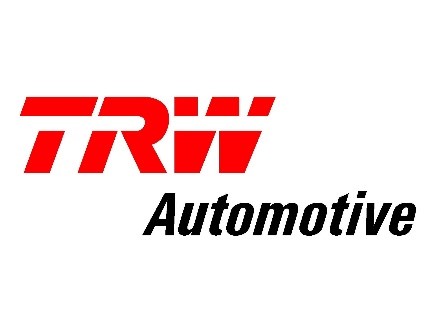
Introduction
Alphabet Inc. with three related Google entities (“Google” ) have recently obtained a mixed verdict from the National Company Law Appellate Tribunal (NCLAT) in an appeal filed against the Order dated 25.10.2022 of the Competition Commission of India (“CCI/Commission”) holding that Google had abused its dominant position on various counts in violation of several provisions of Section 4 of the Competition Act, 2002 (the Act) , by (i) mandating use of Google Pay Billing System (GBPS) on App developers present on Google Play Store , which was discriminatory and unfair , violated Section 4(2)(a)(i) of the Act, (ii) had a significant negative effect on innovation by other payment processors, thereby contravening Section 4(2)(b)(ii) of the Act , (iii) denied market access to other payment processors and aggregators, violating Section 4(2)(c) of the Act and that (iv) Google’s leveraged its dominance in the app store market to protect its position in the market for UPI-enabled digital payment apps, violating Section 4(2)(e) of the Act.
The NCLAT, in its recent Order dated 28.03.2025, while upholding the findings of violations of the Act by Google on accounts of (i) and (iv) above, has set aside the CCI findings of violation of the Act by Google on accounts of (ii) and (iii), thereby setting aside three out of five findings concerning the GPBS. Further, restricting the penalty imposed by CCI to the “relevant turnover” from GBPS, instead of Google’s total turnover in India, NCLAT has also reduced the penalty imposed on Google from INR 936 crores to INR 216.68 crores, a substantive reduction of over 75%, which is rare. Additionally, the NCLAT also set aside the seemingly ex-ante remedies prescribed by the CCI.
This decision provides significant respite to the Alphabet Group in India, which is facing heightened scrutiny from antitrust authorities around the world for its alleged business practices.
Notably, last year, after passing the order dated 28.10.2022, impugned in this appeal, the CCI initiated another investigation against Google following its introduction of “User Choice Billing” (“UCB”), vide its order dated 15.03.2024. The CCI, prima facie, found Google in violation of Sections 4(2)(a), 4(2)(b), and 4(2)(c) of the Competition Act, 2002 (“the Act”) and consequently directed the Director General (“DG”) to conduct a detailed investigation. Google’s Play Billing System (“GBPS”) / User Choice Billing (“UCB”) continues to hurt start-ups and App developers in India due to lack of choice for online payments for in-App purchases (mandated only through Google Pay) and being excessive /unfair, a blanket 15% or 30%, as the case may be, for all payment transactions through GPBS or 11% or 26% through UCB , while other online payment modes such as Debit Card powered by RuPay, Unified Payment Interface (“UPI”) charge a minimal 0 to 3 % .Earlier the informants in the present case , being Start Ups led by Naukri.com had moved a civil suit before the Madras High Court (“MHC”) stating the jurisdiction of the CCI is as a fair market regulator and not a price determining agency, however, the MHC observing the information filed by the informants on the similar grounds is pending before the CCI, refused to entertain the civil suit. (For more information about the MHC proceedings read our earlier blog on this.). The said investigation is still ongoing against Google in India.
Background of the case
This Appeal arises from an order dated 25.10.2022 passed by the Competition Commission of India (CCI) under Section 27 of the Act in three clubbed Case Nos. 07 of 2020, 14 of 2021, and 35 of 2021. The proceedings were initiated by the CCI following three complaints[1] alleging anti-competitive practices and abuse of dominance by Google concerning its GPBS. The core issue in the matter pertained to Google’s imposition of the mandatory use of GPBS and Google Play In-App billing for processing payments by app developers and their users for purchase of apps on Play Store and In-App purchases, which privileges Google Pay over other apps facilitating payments through UPI and mobile wallets, if they want to be listed on the Play Store. The DG on being directed,( after CCI found a prima facie case against Google for abuse of dominant position under Section 4 of the Act) conducted a detailed investigation and submitted its report to the CCI on 16.3.2022.
On 25.10.2022, the CCI passed its final order finding contravention of Section 4 of the Act (abuse of dominant position) on five counts (as described above) and imposed remedies in the form of directions besides imposing penalty of Rs. INR 936.44 crores on Google under Section 27 of the Act. Google preferred a Competition Appeal before the NCLAT against this order.
Proceedings before the NCLAT
The NCLAT, after considering the submission advanced by the parties and material brought on record, identified 10 questions to be considered and to be answered.
- Whether identification of ‘relevant market’ by the CCI insofar as market for apps facilitating payment through UPI in India is wrong and whether all digital modes of payment, i.e. wallets, UPI net banking, credit and debit card are substitutable both from customer and market perspective?
The Counsels for Google (“Appellant”) challenged the CCI’s identified relevant “market for Apps facilitating payment through UPI in India” being narrow and thus to be demonstrably incorrect. The Appellant submitted that all digital modes of payments i.e. Wallets, UPI, net banking, credit and debit cards are substitutable both from a customer and merchant perspective also the appellant presented a survey data to back their assertion that all modes of digital payments such as wallets, UPI, credit and debit cards etc. are substitutable from the consumer perspective and , therefore, from the perspective of substitutability CCI ought to had considered before delineating such narrow market. However, the NCLAT, considering the CCI’s observations in its impugned order, observed that CCI had already dealt upon substitutability of UPI and other method of digital payments and while considering the question of substitutability the NCLAT was of the view that CCI also noticed considered the evidences brought on record and then delineated the market noting that there is no substitutability between UPI enabled payment system and other payment system. Therefore, NCLAT affirmed the CCI’s market delineation and was of the view that market for Apps facilitating payment through UPI in India has been correctly determined. The said product market is not interchangeable or substitutable by the consumer by other payment systems.
2. What are the legal standards for “effect-based analysis”? Whether effect-based analysis means both proof of conduct leading to actual restriction as well as conduct which is capable of restricting competition?
The Appellant argued that the CCI’s assertion that the Competition Act 2002 has been enacted to prevent “likely” effects is flawed, as the scheme of Section 4 of the Act does not support such an interpretation. According to the Appellant, actual anti-competitive effects must be established through a proper effect-based analysis, which requires demonstrating actual harm caused to competition. The Appellant contended that unless actual harm is established, no violation under Section 4 can be inferred by the CCI. Furthermore, the CCI did not analyze whether different integration methods produced any adverse effects on competition in India. Instead, the CCI proceeded on the basis that there was no requirement to conduct an effect analysis. The Appellant emphasized that no anti-competitive effects were evident in the market, especially considering the minimal share of UPI transactions on the Play Store compared to the overall UPI ecosystem.
On the other hand, the CCI submitted that the Appellant misinterpreted the standard for an effect-based analysis by asserting that only evidence of actual harm is relevant. The CCI argued that the analysis encompasses both proof of conduct that has already resulted in actual harm and conduct that is capable of restricting competition. According to the CCI, accepting the Appellant’s interpretation would effectively prevent the Commission from intervening until actual market harm or consumer detriment had occurred, even when there was substantial evidence indicating that a dominant enterprise was likely to cause such harm. The CCI referred to various provisions of the Act, including the Preamble, Sections 3, 6, 19(4)(1), 20(2) read with 20(4), and 32 of the Act, to support its argument.
The NCLAT, while examining the matter, referred to the Report of the Competition Law Review Committee (July 2019), which endorsed the view that effect analysis under Section 4(2) is valid and does not require any amendment. The NCLAT relied on foreign antitrust decisions, its own judgement dated 29.03.2023 passed in the CCI’s “Android Order” (1st Google case order ) and the statutory scheme of the Act, observed that “effect analysis” must consider both conduct that has caused actual harm and conduct that is likely to have an adverse effect on competition. The NCLAT agreed with the CCI view that effect analysis cannot be confined solely to conduct that has resulted in actual anti-competitive effects; it must also encompass conduct that is capable of causing harm. However, the NCLAT added a caveat, stating that the conduct with regard to which effect analysis has to take place is a conduct which has already happened or occurred. No contravention can be proved on any likely conduct of dominant entity. It is only in effect analysis likely effect can be looked into. Whether it has caused actual harm or capable of resulting in anti-competitive effect need also to be looked into.(Para 49 ibid)
3. Whether the Commission has conducted any effect analysis in its
decision or not?
The Appellant contended that the CCI, in its order, failed to conduct a proper effect analysis, instead merely reproducing excerpts from the DG’s report across various paragraphs without independently assessing the alleged anti-competitive effects. However, the NCLAT rejected this argument, observing that the CCI’s order cannot be interpreted to suggest that mere dominance by the Appellant would automatically result in a finding of contravention. The NCLAT, while addressing Question No. (2), reaffirmed that effect analysis is necessary concerning the specific conduct under scrutiny. Rejecting the Appellant’s plea, the NCLAT concluded that the CCI did, in fact, conduct an effect analysis. It noted that the CCI’s order carefully examined the DG’s report, considered Appellant’s responses, and arrived at well-reasoned conclusions based on this analysis. The NCLAT found merit in the CCI’s argument that an effect analysis was indeed carried out, even if it drew upon the DG’s findings and the responses of the Appellant.
4. Whether the Appellant by requiring app developers to mandatory
use of Google Play (GPBS) have imposed a discriminatory condition in sale of goods and services and violation of Section 4(2)(a)(i) was proved?
The Appellant contended that the CCI had failed to apply the “fairness and reasonability test” as laid down by the CCI itself in Indian National Shipowners Association vs Oil and Natural Gas Corporation Ltd. (ONGC)[2] . The Appellant argued that the finding that conduct lacked legitimate business interests was a bare conclusion, unsupported by reasoning and without considering the necessity of imposing the GPBS condition. However, the NCLAT observed that making access to the Play Store dependent on mandatory use of GPBS for paid apps and in-app purchases was arbitrary, one-sided, and devoid of any legitimate business interest. Additionally, the NCLAT noted that app developers were previously using various payment mechanisms, and the mandatory imposition of GPBS was discriminatory, limiting their choice. Users were also restricted to making payments only through GPBS, eliminating their freedom to use other payment systems.
The NCLAT referred to the explanation to Section 4, to observe that the scheme of Section 4 of the Act allows discriminatory conditions or prices only if they are necessary to meet competition. However, the NCLAT viewed that the Appellant failed to establish that the mandatory use of GPBS was adopted to meet competition, and no supporting evidence or arguments were presented in this regard. As a result, the NCLAT upheld the CCI’s conclusion that Appellant had violated Section 4(2)(a)(i) of the Act, confirming that the mandatory use of GPBS was an unfair and discriminatory condition imposed on app developers and users.
5. Whether the requirement of payment of commission/fee by the app developers to the extent of 15-30% which fee is not being paid by YouTube for which payment processor is engaged by Google on payment of 2.3% is discriminatory and violates Section 4(2)(a)(ii)?
In this case, the CCI found that the Appellant’s imposition of discriminatory pricing—specifically with respect to its own application, YouTube, which was not subject to the same service fee as other apps covered under the GPBS requirements—constituted a violation of Section 4(2)(a)(ii) of the Act. The Appellant challenged this conclusion, arguing that the comparison between entities should be made on an equal footing. The Appellant pointed out that app developers who host their apps on the Play Store are required to pay a fee based on the revenue earned from the Play Store, whereas YouTube is Google’s own app, and the company does not claim a 15-30% service fee for it. Therefore, the Appellant argued that such a distinction could not be considered discriminatory under Section 4(2)(a)(ii).
The NCLAT, agreeing with the Appellant’s arguments, observed that the CCI had overlooked this important distinction. The NCLAT found that the CCI had erroneously concluded that there was a violation solely because YouTube was not paying the same service fees as other apps, without considering the crucial aspect that YouTube is Google’s own app. As such, the NCLAT held that the CCI’s findings regarding the violation of Section 4(2)(a)(ii) of the Act cannot be sustained and should be set aside.
6. Whether Google restrictions for mandatorily using of GPBS have
significant negative effect on the improvements and innovative solutions that third party payment processors/ aggregators would be able to bring to the market and is in violation of Section 4(2)(b)(ii) of the Act?
The NCLAT rejected the CCI’s finding that Google’s mandatory use of GPBS restricted or limited technical or scientific development to the prejudice of consumers under Section 4(2)(b)(ii) of the Act. It noted that despite extensive investigation and submissions from over 40 app developers and payment processors, the CCI failed to present concrete evidence of technical development being impeded. Instead, Google demonstrated that growth in the payment processing sector had increased rather than diminished. The NCLAT emphasized that payments made through GPBS accounted for less than 1% of the total UPI payments, indicating that the broader UPI market remained unaffected. Furthermore, it was observed that the market of payment processors/aggregators was not established as a relevant market during the investigation. Consequently, the NCLAT concluded that the CCI’s finding of a violation of Section 4(2)(b)(ii) of the Act could not be sustained.
7. Whether Google has abused its dominant position in the app store market and indulged in practices resulting in denial of market access, which is violative of Section 4(2)(c) of the Act?
The NCLAT also rejected the CCI’s finding of a violation under Section 4(2)(c), holding that Google had not denied market access to payment processors. It noted that Google is not active in the alleged payment processing market but sub-contracts third parties for processing payments related to its own app, YouTube. The CCI, relying on decision of the Apex Court in CCI vs. Fast Way Transmission Pvt. Ltd.,[3] argued that the use of the words “in any manner” before “denial of market access “ in Section 4(2) ( C ) should be interpreted broadly. However, the NCLAT found that GPBS accounts for less than 1% of the overall UPI payments, with more than 99% of the market open for payment processors. It held that Google’s requirement for app developers to use GPBS for paid apps and in-app purchases does not equate to market denial. Instead, Google, as a buyer of payment processing services, is actually facilitating market access for payment processors by providing them with opportunities to offer their services. The NCLAT also noted that the CCI failed to establish a relevant market for payment processors/aggregators and did not demonstrate anti-competitive effects within that market. Since Google’s share in the overall digital payment ecosystem is minimal, the allegation of market denial to other payment apps was found unsustainable. Therefore, the NCLAT concluded that no violation of Section 4(2)(c) of the Act was proved.
8. Whether practices followed by Google making developers dependent on Google to access the users on its platform, result in leveraging its dominance in market for licensable mobile OS and app stores for Android OS, to protect its position in the downstream markets, is in violation of the provisions of Section 4(2)(e) of the Act?
The Appellant argued that for a violation under Section 4(2)(e), two distinct markets must be established: one where the entity is dominant and another where it seeks to enter or protect. The Appellant contended that the CCI failed to identify any downstream market and did not establish a causal link between Google’s dominance in one market and its alleged attempt to leverage this dominance into another. Additionally, there was no evidence of anti-competitive effects in any undefined downstream market. The Appellant asserted that developers have access to various alternative app distribution channels, and the CCI’s findings regarding settlement periods, data collection policies, and discriminatory conduct were insufficient to establish a contravention under Section 4(2)(e).
The CCI argued that Google was leveraging its dominance in the market for licensable mobile OS and app stores for Android to gain an advantage in markets where its apps compete with others. The “causal link’ was established by Google’s practice of granting itself longer settlement periods (15 to 45 days) compared to the industry standard of three days. Google’s dominance over Play Store also gave it access to valuable data, which it could use to enhance its position in other markets. Additionally, the CCI observed that Google’s requirement for app developers to mandatorily use the Google Billing Payment System and its exclusive use of “intent flow” technology for Google Pay, while restricting others to “collect flow” technology, was a clear instance of leveraging. The NCLAT concurred with the CCI’s findings, holding that Google’s dominance in the markets for licensable mobile OS and app stores for Android was indeed being leveraged to promote and protect its position in the market for UPI-enabled digital payment apps. Therefore, the NCLAT upheld the CCI’s finding of violation under Section 4(2)(e) of the Act.
9. Whether the CCI found charging of commission/ service fee from
15% to 30% discriminatory? No.
The DG investigation found that Google’s fee of 15% to 30% is excessive and unfair under Section 4(2)(a)(ii). However, the CCI concluded that the evidence on record was insufficient to make a definitive finding on Google’s monetization model. As a result, NCLAT agreeing with CCI finding also held that no violation under Section 4(2)(a)(ii) of the Act regarding the charging of 15% to 30% fees was established.
10. Whether directions in paragraphs 395.2 to 395.8 of the impugned order amounts to form of ex ante regulation for undefined “gatekeepers” beyond the CCI power under Section 4 and 27 of the Act?
The NCLAT considered the Appellant’s reference to the Report of the Committee on Digital Competition Law submitted on 27 February 2024. The Report acknowledged the existing structure of the Competition Act, which operates on an ex-post facto model, and emphasized the need for additional tools to strengthen and supplement CCI’s existing powers. It highlighted that regulating the digital market may require adopting an ex-ante approach. The Commission, referring to the Appellant as a “gatekeeper,” asserted that it bears special responsibilities. However, the NCLAT noted that under the current statutory regime, a specific violation of Section 4 must be expressly established before issuing any directions or imposing penalties under Section 27(b). Simply labeling the Appellant as a “gatekeeper” does not justify a finding of violation. The NCLAT concluded that the CCI cannot issue ex-ante directions under the existing legal framework, where violations must be specifically pleaded and proven. The validity of directions from 395.2 to 395.8 would be examined separately.
11. Whether directions contained in paragraph 395 of the CCI impugned order are ultra vires, overboard and disproportionate remedial directions?
The NCLAT affirmed the CCI’s remedial measures regarding violations under Sections 4(2)(a)(i) and 4(2)(e) of the Act, thereby upholding the directions that address the imposition of the Google Payment Billing System and the leveraging of its dominant position. However, the NCLAT set aside all remedial measures related to findings that were not affirmed by the Commission specifically those under Sections 4(2)(a)(ii), 4(2)(b)(ii), and 4(2)(c).
12. Whether the penalty imposed by CCI on the entire turnover of Google is unsustainable and the CCI could have imposed penalty only on the “relevant turnover”, i.e., turnover of Play Store and the penalty imposed is unsustainable?
The NCLAT relying on the Supreme Court’s decision in Excel Crop Care Ltd. vs. CCI (2014)[4], viewed that penalties should be based on the “relevant turnover” rather than the total turnover. It pointed out that, though, the CCI had determined the relevant turnover of Appellant, however, erroneously, it ultimately imposed the penalty on Google’s total turnover. In light of the two-contravention affirmed under Sections 4(2)(a)(i) and 4(2)(e) of the Act, NCLAT was of the opinion that penalties under Section 27(b) still be levied, but on relevant turnover, therefore, the NCLAT modified the penalty accordingly. It imposed a penalty of 7% of the average relevant turnover for the financial years 2018-19, 2019-20, and 2020-21, amounting to INR 2,16,69,12,773 (approximately USD 2,98,89,312.39).
To Conclude, the NCLAT has affirmed /upheld only two ( out of total five violations) of the impugned CCI order under Section 4(2)(a)(i) and Section 4(2)(e) of the Act (relating to “mandatory use of GPBS thereby imposing an unfair and discriminatory condition in sale of goods and services” and “leveraging its dominance in market for licensable OS and app stores for Android OS, to protect its position in downstream markets for UPI enabled digital payment apps” , respectively).On the other hand , NCLAT has set aside three other violations of the impugned CCI order under Section 4(2)(a)(ii), Section 4(2)(b)(ii) and Section 4(2)(c) of the Act ( relating to (i) payment of commission by the app developers to the extent of 15-30%, which fees were not paid by its own YouTube being discriminatory, (ii) mandatory use of GPBS having any significant negative effect on the improvements and innovative solutions by that other payment processors/aggregators , and (iii) caused denial of market access in any manner to the growth or expansion of other payment apps , processors and aggregators in India, respectively). Consequently, the NCLAT also set aside the directions passed by CCI in the impugned order relating to the findings of violation of Sections 4(2)(a)(ii), Section 4(2)(b)(ii) and Section 4(2)(c) of the Act while upholding the directions passed by CCI impugned order relating to the violation of Section 4(2)(a)(i) and Section 4(2)(e) of the Act.
COMMENT: The NCLAT judgment is another important landmark in the process of evolution of jurisprudence on the issue of abuse of dominance by the large online market players like Google. By reiterating the importance of the need to conduct “effect based analysis” while deciding upon the contravention of each specific unilateral conduct of dominant firms prohibited under each of the 5 clauses of Section 4 of the Act , laid down by the same Bench of the Tribunal in the 1st Google case order , the Hon’ble Tribunal has shown consistency in approach which ( unless set aside by the Supreme Court in the regular second appeal filed/to be filed by CCI) will bring regulatory certainty , which is welcome . Similarly, while setting aside the seemingly ex ante directions passed by the Commission while considering Google as “gatekeeper” (a term picked without permission of the EC by CCI!), the NCLAT has sent a strong message to the fair market regulator to avoid going overboard to copy paste the European law in India.
Though most certainly this judgment is likely to be appealed by both Google and CCI in cross appeals to Supreme Court, till the Apex Court decides them , this will be the law as far as Google’s unilateral conducts in the relevant markets are concerned .
# Google #abuseofdominance #Googleplaystore
[1] Received in 2020 ( by XYZ-Anonymous kept confidential) , 2021 ( Match Group Inc. ) and another in 2021 by Alliance of Digital India Foundation (ADIF) registered as Case no. 07/2020, 14/2021 and 35/2021 respectively.
[2] CCI Order dated 02.08.2019 under Section 26(6) of the Act in Case No. 01/2018.
[3] (2018) 4 SCC 316
[4] SC Judgment dated 08.05.2017 in Civil Appeal No. 2480 of 2014.







